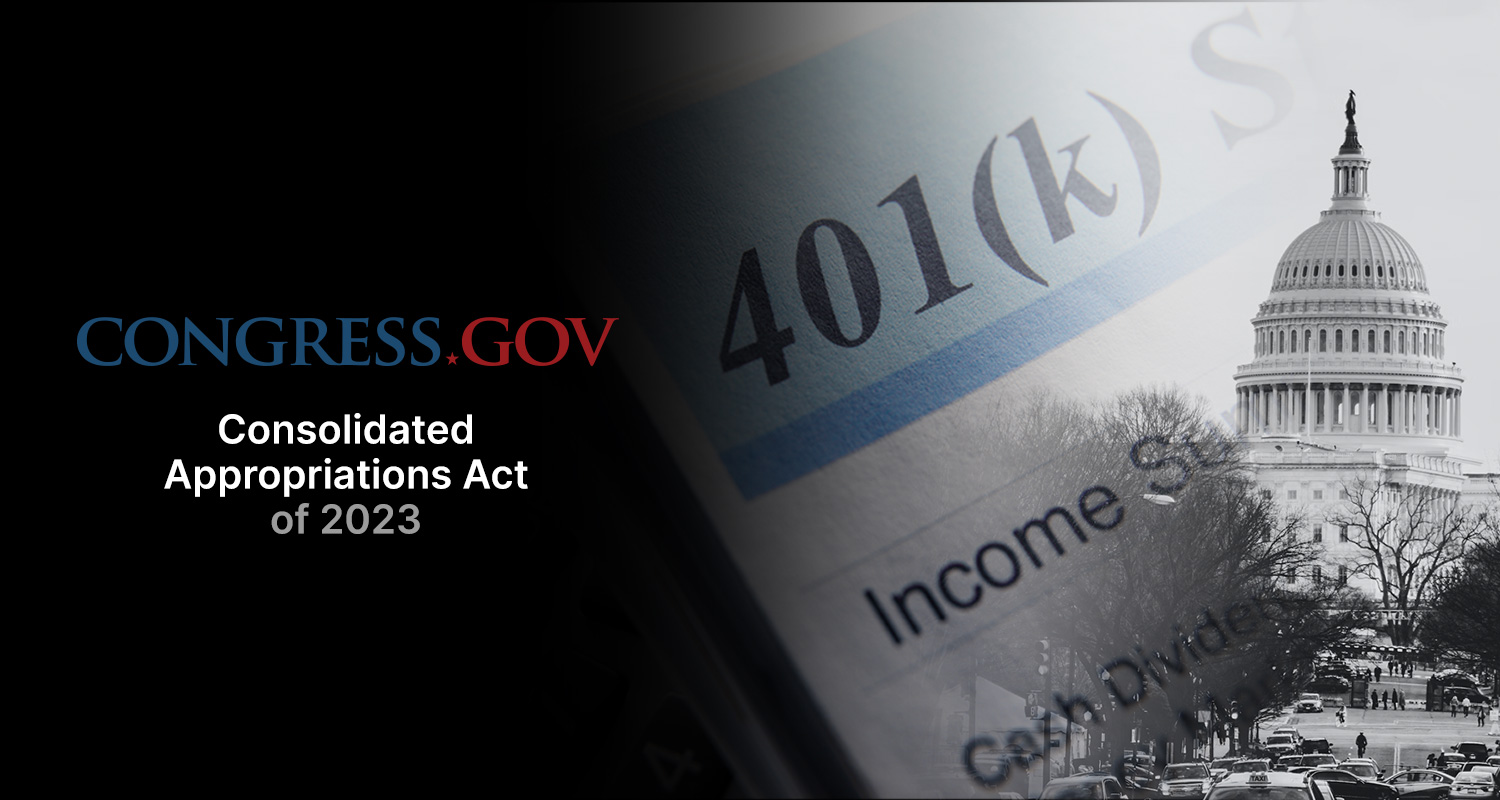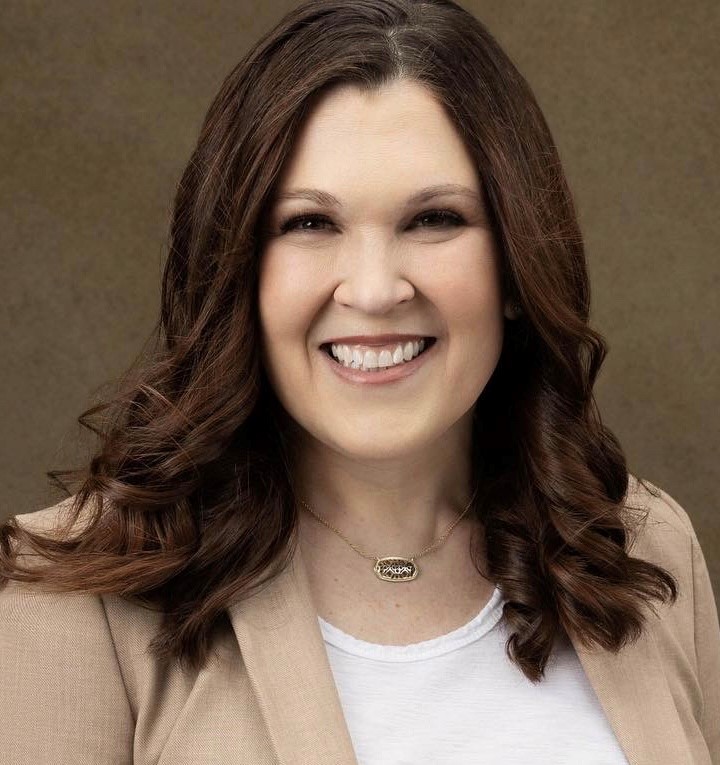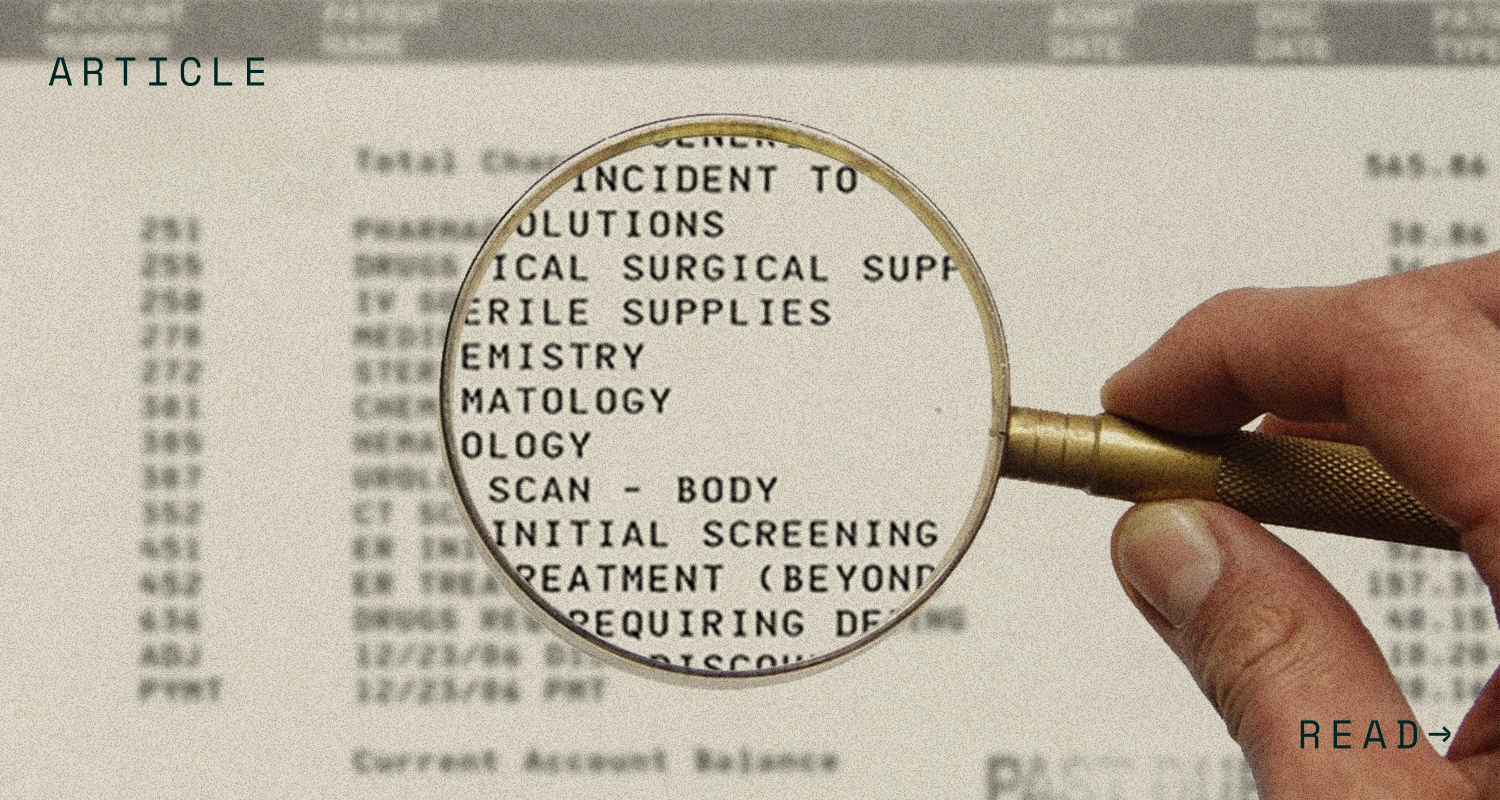On December 29, 2022, President Joe Biden signed the $1.65 trillion omnibus spending bill, officially called the Consolidated Appropriations Act of 20231, into law.
This law addresses numerous issues, from averting a governmental shutdown to modernizing the employer-sponsored retirement plan landscape. These retirement plan provisions contained in the omnibus spending bill are referred to as SECURE Act 2.0 of 2022 (“SECURE Act 2.0”), further building upon 2019’s Setting Every Community Up for Retirement Enhancement Act2 (the “2019 SECURE Act”).
This blog reviews the top 10 SECURE Act 2.0 retirement plan provisions about which employers have been asking. Stay tuned as we will be following up this “top 10” post with more details on SECURE Act 2.0.
Effective for 2023 Calendar-Plan Years
| Topic | Current Rules | New Rules | Mandatory or Discretionary Change? | Effective Date |
| Required Mandatory Distributions Age Increase | Under 2019 SECURE Act, required minimum distributions (RMDs) must generally start by age 72 (up from age 70.5). RMDs are the minimum amounts that employees must withdraw from their 401(k) plan annually when they reach a certain age. | SECURE Act 2.0 increases the RMD age from 72 to: • 73 (for employees attaining age 72 after December 31, 2022, and age 73 before January 1, 2033), and • 75 (for employees attaining age 74 after December 31, 2032) | It is discretionary whether to delay distributions to these new RMD ages; but recordkeepers may require this change, unless you opt out. | Effective for distributions after December 31, 2022, for employees who attain age 72 after December 31, 2022. |
| Matching and Non-elective Contributions Designated as Roth Contributions | Currently, the law does not permit employer matching or non-elective contributions to be made on a Roth basis. A non-elective contribution is an employer contribution to a 401(k) plan where the employer contributes a percentage of each eligible employee’s compensation to the plan. A non-elective contribution is not an employer matching contribution. | Under the new law, employers may permit employees to designate employer matching or non-elective contributions as Roth contributions. | Discretionary. | Effective for contributions made after December 29, 2022 (the date the bill was enacted). |
Effective for 2024 Calendar-Plan Years
| Topic | Current Rules | New Rules | Mandatory or Discretionary Change? | Effective Date |
| Updated Dollar Limits for Mandatory Distributions | Currently, employers may distribute former employees’ 401(k) balances (and rollover to an individual retirement account (IRA)) if the former employee’s balance is no more than $5,000. | Under the new law, this $5,000 limit is increased to $7,000. | It is discretionary whether these new limits are adopted; but recordkeepers may require this change, unless you opt out. | Effective for mandatory distributions occurring after December 31, 2023. |
| Catch-Up Contributions (Roth basis only) | Catch-up contributions to a 401(k) plan can be made on either a pre-tax or Roth basis. | Under the new law, catch-up contributions to 401(k) plans must be made on a Roth basis only. This does not apply to eligible participants who earned $145,000 or less in the previous calendar year. | Mandatory for 401(k) plans that permit catch-up contributions. | Effective for taxable years beginning after December 31, 2023. |
| Emergency Savings Accounts | Currently, some employers are offering emergency savings accounts (“ESAs”) both outside and inside 401(k) plans, though there has been very little guidance on how to offer ESAs in 401(k) plans. | Under the new law, employers are permitted to amend their plan documents to offer short-term ESAs. • These ESAs must be funded with post-tax Roth contributions only. • Employers may automatically enroll employees in the ESA at a rate of no more than 3% of compensation. • ESA contributions are capped at $2500 (indexed for inflation). • Employees must be allowed to take one distribution monthly, and the first four withdrawals are not subject to any fees. | Discretionary. | Effective for plan years beginning after December 31, 2023. |
| Withdrawals for Emergency Expenses | Current law permits plan withdrawals in certain instances (without tax penalty), such as upon permanent disability or after 59.5 years of age (if permitted by the plan document). | Under SECURE Act 2.0, employees may take one penalty-free withdrawal annually (up to $1,000) for emergency expenses. • The employee may repay the distribution over 3 years, though the employee would have to repay those funds within the 3 years before making another similar withdrawal. | Discretionary. | Effective for distributions made after December 31, 2023. |
| Student Loan Payments Considered for Matching Contributions | Currently, 401(k) matching contributions cannot be made based on amounts of an employee’s student loan payments. | Under the new law, employers may treat all student loan payments as elective deferrals, meaning that an employer can make matching contributions on these payment amounts. • These 401(k) matching contributions are subject to the same vesting schedule as other matching contributions. • Employers can rely on an employee’s certification to ensure that student loan payments are being made. • For nondiscrimination testing purposes, employers may choose to test “student loan matching contributions” and other matching contributions separately, so that test results aren’t skewed. • Finally, employees may designate any student loan matching contributions as Roth contributions. | Discretionary. | Effective for plan years beginning after December 31, 2023. |
Effective for 2025 Calendar-Plan Years
| Topic | Current Rules | New Rules | Mandatory or Discretionary Change? | Effective Date |
| Automatic Enrollment | Currently, 401(k) plans may use automatic enrollment and automatic escalation (where an employee’s contribution is automatically increased by a certain percentage (such as 1%) year-after-year). | New 401(k) plans must include an eligible automatic contribution arrangement (EACA), where employees are automatically enrolled in the plan with a default rate between 3% and 10%. The employee may opt-out of this within 90 days of the automatic enrollment. Additionally, new 401(k) plans must include an auto-escalation requirement of 1% annually, up to a maximum of at least 10% of compensation. If the employer chooses less than 10% of compensation for the auto-escalation feature, then the employee’s contribution would increase by 1% each year until at least 10% is reached, but not more than 15%. | Mandatory for new 401(k) plans with initial plan years beginning after December 29, 2022 (the date of the SECURE Act 2.0’s enactment). NOTE: Companies with 10 or fewer workers and new companies with less than 3 years of operation are excluded from this auto-enrollment & auto-escalation requirement. | These auto enrollment and escalation provisions are not required until plan years beginning after December 31, 2024. However, they apply to any new plan started on or after December 29, 2022 (the date of the SECURE Act 2.0’s enactment unless the plan is excluded, as explained in the NOTE in the previous column). |
| Part-time Employee Eligibility | Currently, under 2019 SECURE Act, 401(k) plans must permit an employee to contribute to the plan if the employee has worked at least 500 hours annually for at least 3 consecutive years and is at least 21 years of age by the end of the 3-year period. | Under the new law, the IRS reduces this 3-year period to 2 years before part-time employees may contribute to the plan. | Mandatory but may not impact all plans (for example, if the plan already covers part-time employees). | Effective for plan years beginning after December 31, 2024. |
| Increased Catch-Up Limits | Currently, employees aged 50 years and over may make catch-up contribution amounts (above and beyond their standard deferral contribution amounts which are $20,500 in 2022 and $22,500 in 2023). Like other contribution limits, catch-up contributions are indexed for inflation. For example, in 2022, the maximum catch-up amount is $6,500. For 2023, this maximum amount is increased to $7,500. | Beginning in 2025, catch-up contribution for employees aged 60-63 shall increase to the greater of: • $10,000 maximum or • 150% of the catch-up amount designated for 2024 (indexed for inflation). | Mandatory for 401(k) plans that permit catch-up contributions. | Effective for taxable years beginning after December 31, 2024. |
What Employers Need to Know
As these new 401(k) plan rules take effect over the next few years, employers have a legal responsibility to comply with the rules that are mandatory, based on the terms of their 401(k) plan documents and/or their recordkeeper’s requirements. The plan’s recordkeeper may assist with these amendments, though employers are responsible for contacting their recordkeeper to determine if/when/how the recordkeeper will assist.
Employers will be responsible for anything not completed by their recordkeeper (including providing timely notices to participants or completing plan amendments and resolutions). In addition, employers must always retain a copy of any plan amendments or participant notices as part of their fiduciary responsibilities.
If the recordkeeper does assist, employers should be sure to inquire about any additional recordkeeper cost. If the recordkeeper does not assist, employers must perform any actions not performed by the recordkeeper (or they may obtain assistance from counsel).
For any discretionary provisions, employers should determine which changes they wish to adopt and should approve those changes through their applicable corporate governance procedures.
Employers should reach out to their recordkeepers to review any desired changes, as there may be administrative limitations on what recordkeepers can accommodate. Also, employers should note that recordkeepers may automatically implement certain changes unless employers opt out.
Employers may also consider working with their ERISA attorney on the process of approving and implementing discretionary changes and preparing participant communications.
Additional Resources
- Consolidated Appropriations Act of 20233
- 2019’s Setting Every Community Up for Retirement Enhancement Act4
- H.R. 2617 – 117th Congress (2021-2022). Consolidated Appropriations Act, 2023. (2022, December 23). https://www.appropriations.senate.gov/imo/media/doc/JRQ121922.PDF
- H.R. 1994 – 116th Congress (2019-2020). Setting Every Community Up for Retirement Enhancement Act of 2019. (2019, May 23). https://www.congress.gov/bill/116th-congress/house-bill/1994
- H.R. 2617 – 117th Congress (2021-2022). Consolidated Appropriations Act, 2023. (2022, December 23). https://www.appropriations.senate.gov/imo/media/doc/JRQ121922.PDF
- H.R. 1994 – 116th Congress (2019-2020). Setting Every Community Up for Retirement Enhancement Act of 2019. (2019, May 23). https://www.congress.gov/bill/116th-congress/house-bill/1994
Disclaimer: This retirement plan compliance checklist is intended for informational purposes only and should not be construed as legal or tax advice. The information provided may not reflect the most current legal developments and may vary by jurisdiction. The content in this retirement plan compliance checklist is for general informational purposes only and does not apply to any particular facts or circumstances. This retirement plan compliance checklist does not in any way establish an attorney-client relationship, nor should any such relationship be implied, and the contents herein do not constitute legal or tax advice. If you require legal or tax advice, please consult with a licensed attorney or tax professional in the proper jurisdiction. The contributing authors of this content expressly disclaim all liability to any persons or entities with respect to any action or inaction taken based on the contents of this communication. © 2023 Sequoia. All Rights Reserved.
Pensionmark Financial Group, LLC (“Pensionmark”) is an investment adviser registered under the Investment Advisers Act of 1940. Pensionmark is affiliated through common ownership with Pensionmark Securities, LLC (member SIPC).




